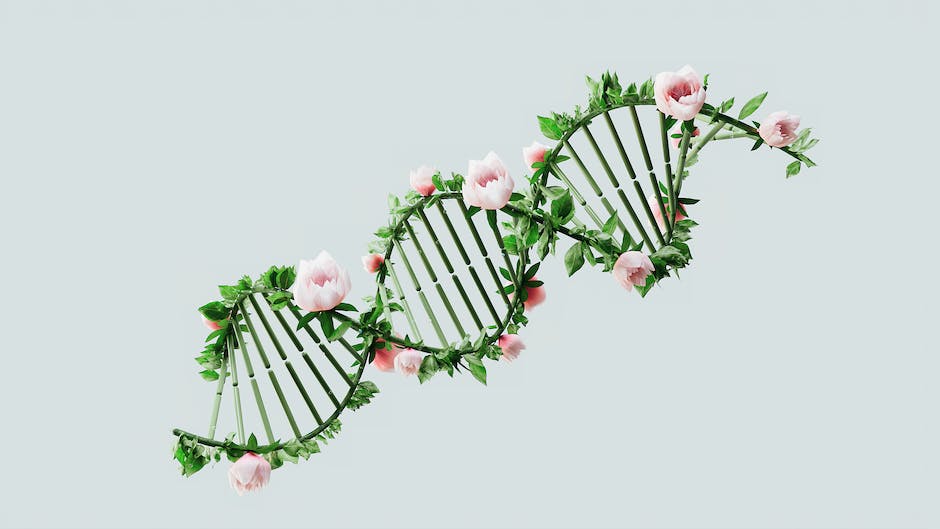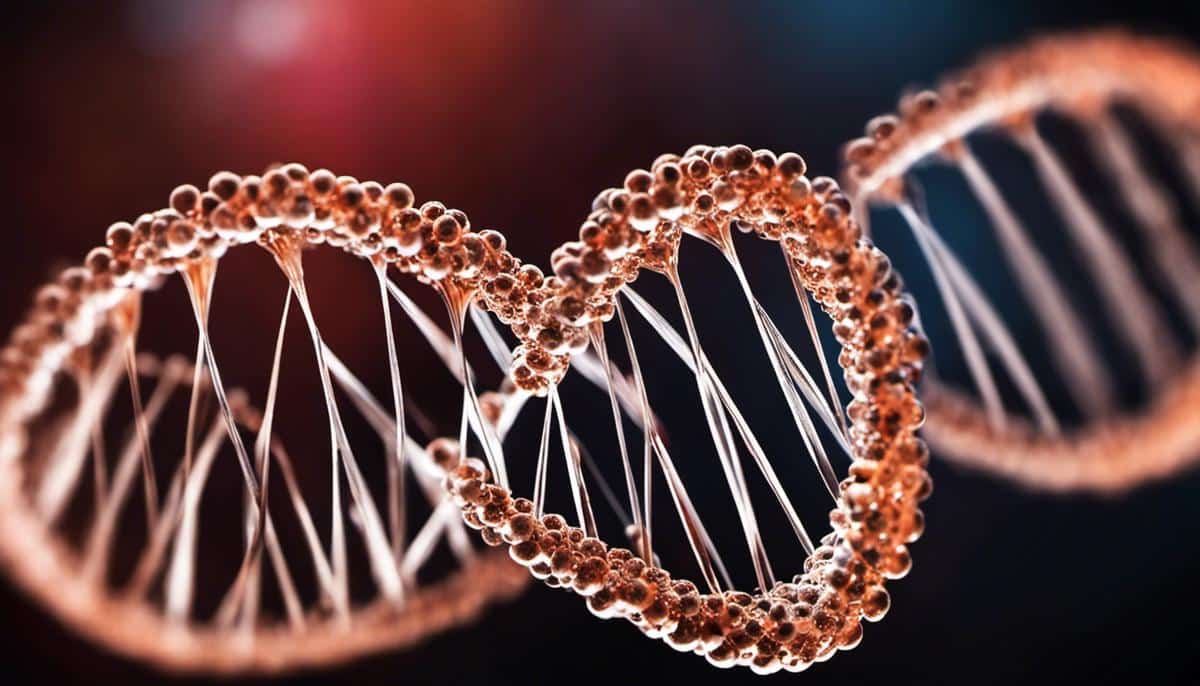In the ever-evolving world of scientific discovery, DNA Test Results have emerged as a powerful tool for gaining insight into our biological heritage.
This increasingly popular endeavor offers limitless potential for bridging gaps in genealogical research, providing clarity on our ethnic backgrounds, and initiating connections with relatives we never knew we had.
The process, beginning with choosing the right DNA test for the best results in research to interpreting complex results, navigating ethnicity estimates, and making that first contact with a DNA match, can be both exciting and overwhelming.
This guide will demystify these elements, offering beginners a comprehensive understanding of the essentials involved in DNA testing results and genealogy.
Discover the roots of your family tree! Dive into our latest post, “Ancestors’ Research | Free Beginner’s Guide” and unlock the mysteries of your heritage. Your journey to uncovering your family’s past is just a click away. [Explore now!] 🌳🔍
Choosing the right DNA test for genealogy research
As explorators of the scientific realm, the fascination that DNA testing offers is no less enticing.
DNA testing has seen an unprecedented upswing in the field of genealogical research thanks to advancements in genetic science.
Unraveling a person’s ancestral roots or mapping genetic compositions are indeed fascinating ventures, but the crucial step lies in choosing the most apt DNA test for the research.
Several factors must be weighed before making a decision, and this article attempts to underline these factors, breaching complexities and initiating a simple yet comprehensive understanding.
One of the paramount factors is the Reason for Testing. The motive behind the DNA test significantly influences the type of test to be chosen.
Y-chromosome testing can trace the male lineage, while mitochondrial DNA testing traces the maternal lineage.
A test using autosomal DNA is helpful if one is looking for connections across all ancestral lines.
Proximity to Testing Laboratories is another crucial factor. If one can pick a reputable testing company with a laboratory close by, it is beneficial in terms of cost-effectiveness and getting faster results.
Accreditation of the lab should also not be overlooked; a well-equipped lab with accreditations like AABB, CAP, ISO 17025, etc., is generally reliable.
The Size of the Database is substantially important in the context of genealogy DNA tests.
The larger the database of a testing company, the higher the chances of finding a genetic match.
Database size is a critical factor for those trying to find family connections or trace their far-back ancestors.
The Privacy Policy of a test provider must be carefully analyzed before signing up for a test.
One must meticulously scrutinize how they store your DNA samples, their data sharing policies, and what type of control you have over your data, considering the complex nature of genetic privacy and data.
The type of Genetic Markers tested is another facet to consider. Different tests survey a different number of markers; generally, the more markers a test considers, the more accurate the readings will be.
Different tests also provide different degrees of information—some identify broad categories of ancestry, others break down your ancestry into specific regions or tribes.
In terms of Economic Viability, while cheaper tests may seem appealing, their clarity or accuracy may not be as sturdy as slightly costlier ones.
As with all purchases, opting for good quality, in this case, potentially leads to accurate, detailed facts about one’s lineage and ancestry.
Lastly, the Type of Results can guide the choice of test. The format of the final report varies across test providers; some offer raw data, while others provide comprehensive reports with detailed analysis and interpretation.
It is essential to choose a test that presents the results in a way that aligns with your specific needs and understanding.
It is compelling to witness how research can conduct a tryst with roots, and in making this a successful endeavor, the league of scientists, researchers, and academicians strive tirelessly.
DNA tests can either unravel an unclosed chapter or write a new one in the annals of genealogy, making these factors a pivotal part of choosing the perfect one.

Interpreting DNA test results for beginners
A Novice’s Guide to the Interpretation of DNA Test Results
With mathematical certainty permeating our DNA, a clear understanding of genetic test results remains a scholarly pursuit.
Each sequenced result reveals a snippet of heritage, disease susceptibility, and clues to our inherited traits.
These test results can provide insights into familial connections across geographical expanses and offer a glimpse into the past.
But how does one, particularly a novice, interpret these results? First and foremost, it’s crucial to acquaint oneself with reading genetic reports.
These reports segment your genetic makeup into percentages associated with different geographical regions, hence painting a picture of your ancestral origins.
This does not imply direct descent but hints at statistical genetic similarities between you and people in the reported regions.
Accurately interpreting these percentages requires an understanding of the migration patterns of human populations over the centuries.
As such, it’s judicious to consult peer-reviewed publications about human migration and read anthropological references.
Dedicate time to comprehend the complex patterns of human movement and intermarriage, which have profoundly influenced the path of genetic material.
Next, pay heed to the concept of genetic distance. This term is a form of measurement that sheds light on how closely related two individuals may be.
A lower genetic distance implies a higher probability of sharing a common ancestor. It’s worth noting here that even with a low genetic distance, the common ancestor could be many generations back.
Moving forward, your genetic matches, an integral piece of DNA test results, deserve scrutiny.
These genetic matches are individuals in the same database who share significant portions of DNA with you.
Keep in mind that the amount of shared DNA is estimated and can range from close familial ties right down to distant relations.
Exploring these matches can help uncover the deep roots of your lineage and shed light on previously unknown family connections.
The understanding of shared centimorgans (cMs) is equally crucial. This unit of measurement tells you how much DNA you share with your genetic matches.
As a general guideline, more shared cMs increase the likelihood of a closer family connection.
Grasping this concept aids in categorizing genetic matches into familial categories, from immediate family to distant cousins.
Paying attention to haplogroups, clusters of people who share a common ancestor, is vital in understanding human’s ancient migration patterns.
Your maternal and paternal haplogroups, as revealed in your DNA test, contribute to the understanding of your remote ancestry.
Last but not least, mutations, the alteration in the DNA sequence, can help predict individual traits, susceptibility to particular diseases, and even lifespan.
Understanding the significance of the presented mutations in your DNA test results is essential but complex. Therefore, it’s advised to consult a genetic counselor for a detailed interpretation.
The key to interpreting DNA test results lies in thorough research, dedicated patience, and sometimes professional guidance.
It’s a fascinating journey into one’s heritage, health, and individual traits. As English physicist Francis Crick famously said, “DNA makes RNA makes protein makes us.”

Exploring ethnicity estimates in DNA testing
Building upon the foundational understanding of why DNA tests are undertaken, let us delve deep into unpacking the intricacy of ethnicity estimates in a DNA test.
The term “ethnicity estimate” primarily refers to the biogeographical ancestry report that results from fractionating and associating a specific person’s DNA sample with distinct geographic locations or historically recognized populations and ethnic groups.
When you submit your DNA sample for testing, the DNA test provider will sequence your genomes and compare certain markers in your DNA against reference datasets.
These reference datasets comprise genome samples from various ethnic populations globally, allowing the aforementioned comparison that results in an ethnicity estimate.
Deconstructing the process further, ethnicity estimates in DNA tests are derived from an algorithmic analysis.
This probabilistic approach calculates the statistical likelihood of your DNA markers aligning with the reference populations.
Because the process is based on chance and the data it uses is a mix of samples from all over the world, the estimate that comes out of it might not be 100% accurate.
Rather, it should be viewed as an approximation of one’s ethnic lineage.
The ethnic groups articulated in the report are essentially segments of the global population that share a recognizable similarity in their genetic composition, discerned through shared DNA markers.
The science behind this hinges on the fact that certain genetic markers are more prevalent among some populations than others.
This makes it possible to determine the likely ethnic background of an individual based on the frequency and variety of these markers in their DNA.
While presenting immense possibilities, ethnicity estimates in DNA tests are not without their constraints.
The testing provider’s use of a comprehensive and varied reference dataset has a significant impact on the estimate’s accuracy.
If the testing provider’s reference dataset includes insufficiently diverse or inaccurate data, the results of ethnic estimates cannot be completely reliable.
In essence, the scope of ethnicity estimation is not a flawless depiction of an individual’s heritage but a representation of probable ethnic associations based on current knowledge and data.
An encompassing understanding of DNA testing and ethnicity estimates also includes knowing how to interpret the results.
Matching segments of DNA or ‘centimorgans’ shared between two individuals, is used to estimate the degree of relatedness, and tracing haplogroups can reveal ancient ancestral paths.
Additionally, interpreting mutations, which signify changes in genetic sequences, can predict traits and disease susceptibility.
However, it is very important to get help from professionals or genetic counselors to understand the results and what they mean.
This shows how important it is to have knowledge and help when navigating these areas.
Human migration, intermarriage patterns, and the course of history have concocted the diverse tapestry of ethnicity.
And making it a fascinating yet complex branch of study where DNA stands as an exquisite time capsule, unearthing the tales etched in our genes.

Connecting with DNA relatives: Tips for success
After careful consideration of the above-mentioned factors and an insightful analysis of DNA test results, one can pave the way for a successful connection with DNA relatives.
This venture necessitates a multi-faceted approach, which primarily includes:
- Effective communication,
- Utilizing DNA matching tools,
- Participating in genetic genealogy communities,
- And maintaining an open demeanor toward potential relationships.
Commencing the journey of reaching out to DNA matches requires formulating a respectful and thoughtful introductory message.
It’s essential to be personable and express genuine interests in connection.
The correspondence should remain transparent about the shared genetic connection and the desire to explore possible familial ties.
Diligent follow-ups are indispensable, as the responses from DNA relatives can be sporadic or delayed.
DNA-matching tools are cutting-edge technologies that were first used in genetic genealogy. They make it easier to find and study genetic markers that DNA matches share.
These tools can identify overlapping segments of DNA shared among matches, thereby implying a probable common ancestor.
Tools such as chromosome browsers, shared matches, and clusters are indispensable for a more detailed analysis.
Participation in genetic genealogy communities can also be a highly beneficial approach.
These communities, be it online forums, social media groups, or organized events, offer a platform for individuals seeking to connect with DNA relatives.
Sharing one’s genetic journey with these communities often leads to garnering advice, experiences, and sometimes even surprising connections.
Moreover, one’s openness and flexibility significantly contribute to a successful connection with DNA relatives.
DNA revelations can sometimes challenge one’s self-perception and familial expectations. An open mindset is crucial in accepting these revelations and fostering new relationships.
Genetic revelations can also lead to complex, delicate situations. It’s important to respect each relative’s pace and choice regarding further communication and relationship building.
One cannot overlook the role of professional guidance in effectively establishing connections with DNA relatives.
Genetic counselors with knowledge of genetic genealogy can provide advice on best practices and strategies.
They can also help handle unexpected or sensitive findings with composure and professionalism.
Connecting with DNA relatives, therefore, is not merely a product of a well-implemented DNA test.
Also, it is a thoughtful, careful approach comprising effective communication, strategic use of technology, and intellectual curiosity.
It’s indeed a journey that brings science and humanity together in the pursuit of self-identity and familial connections.

Conclusion: DNA Test Results
Delving into the fascinating world of DNA testing provides an engaging journey through the threads of your lineage.
As much as it can seem like a complex process, understanding the basics of DNA structure, the different types of tests available, and how ethnicity estimates are defined makes the whole process manageable.
Furthermore, making successful connections with DNA relatives not only expands your family horizon but also unlocks new aspects of your genealogical history.
Just remember, when it comes to interpreting DNA test results and connecting with newly discovered relatives, patience, persistence, and a touch of curiosity go a long way.







